|
Books Should Be Free Loyal Books Free Public Domain Audiobooks & eBook Downloads |
|
|
Books Should Be Free Loyal Books Free Public Domain Audiobooks & eBook Downloads |
|
Top Authors |
|---|
|
Book type:
Sort by:
|
By: Catherine Grace Frances Gore (1798-1861) | |
|---|---|
 Mrs. Armytage, or Female Domination
Mrs. Armytage, or Female Domination
Mrs Armytage is a widowed landowner, spirited, independent and very much used to having her own way and exercising total dominance over her family. She is acutely aware of social distinctions, proud of her power and prestige, and stands on her dignity to the point of becoming cold, judgemental and aloof. Her character flaws bring her into conflict with her children when her son Arthur announces his choice of a wife who is very much below their rank, and much will happen before Mrs Armytage learns to repent her behaviour... | |
By: Catherine Helen Spence (1825-1910) | |
|---|---|
 Mr. Hogarth's Will
Mr. Hogarth's Will
Jane and Elsie Melville were raised by their kindly but eccentric uncle, Mr Hogarth who believed that women were just as good as men, and thus gave his nieces a boy’s education. Upon his death, they find that he has left his entire fortune to his heretofore unknown son and left them only a small allowance, expecting them to make their own way in the world using the education he furnished them. Will the girls survive in a world that expects them, at the most, to become governesses? | |
By: Catherine of Genoa | |
|---|---|
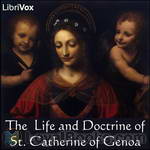 The Life and Doctrine of St. Catherine of Genoa
The Life and Doctrine of St. Catherine of Genoa
Saint Catherine of Genoa (Caterina Fieschi Adorno, born Genoa 1447 – 15 September 1510) is an Italian Roman Catholic saint and mystic, admired for her work among the sick and the poor. She was a member of the noble Fieschi family, and spent most of her life and her means serving the sick, especially during the plague which ravaged Genoa in 1497 and 1501. She died in that city in 1510.In 1551, 41 years after her death, a book about her life and teaching was published, entitled Libro de la vita mirabile et dottrina santa de la Beata Caterinetta de Genoa... | |
By: Catherine Parr (1512-1548) | |
|---|---|
 Lamentation of a Sinner
Lamentation of a Sinner
The Lamentation of a Sinner was written in 1544, the year where Parr took on the role of Regent for a number of months when Henry VIII was fighting wars in France. She writes a general confession of sin and exhortation to holiness. Parr was the first woman to publish a book in English under her own name. | |
By: Catherine Sager Pringle (1835-1910) | |
|---|---|
 Across the Plains in 1844
Across the Plains in 1844
The Sager family, including seven children, set out on the Oregon trail in 1844. Accidents and disease made it a dangerous trip, and both parents died along the way. The orphans made it to the Whitman Mission in Walla Walla, Washington, but their lives were still in jeopardy. In 1847, members of the Cayuse tribe attacked the mission and killed the Whitmans and others living there. Catherine was among those who were taken as hostages, and she survived the massacre. She later wrote about these harrowing experiences in this memoir. | |
By: Catholic Truth Society | |
|---|---|
 Penny Catechism (Catechism of Christian Doctrine)
Penny Catechism (Catechism of Christian Doctrine)
A question and answer format catechism that was the standard catechetical text in Great Britain throughout most of the 20th century. Popularly called the Penny Catechism, as the original version only cost one penny. Various editions of the Penny Catechism were issued through the century and changes were made to the text, particularly following Vatican II. This edition is the pre-Vatican II edition. - Summary by Wikipedia, modified by David Oderberg | |
By: Catulle Mendès (1841-1909) | |
|---|---|
 Fairy Spinning Wheel and the Tales it spun
Fairy Spinning Wheel and the Tales it spun
This is a little volume of old-fashioned fairy tales, collected and rewritten by Catulle Mendès and translated from the French and adapted for an American audience by TJ Vivian. This collection contains some of the most well-known fairy tales, such as the Sleeping Beauty, but also contains some tales which the listener may not be familiar with yet. There is much to discover in these pages. - Summary by Carolin | |
By: Cecil Henry Bompas | |
|---|---|
 Folklore of the Santal Parganas
Folklore of the Santal Parganas
This is an intriguing collection of folklore from the Santal Parganas, a district in India located about 150 miles from Calcutta. As its Preface implies, this collection is intended to give an unadulterated view of a culture through its folklore. It contains a variety of stories about different aspects of life, including family and marriage, religion, and work. In this first volume, taken from Part I, each story is centered around a particular human character. These range from the charmingly clever (as in the character, The Oilman, in the story, “The Oilman and His Sons”) to the tragically comical (as in the character, Jhore, in the story “Bajun and Jhore”)... | |
By: Cecil Warburton | |
|---|---|
 Spiders
Spiders
The mental capacity of spiders; web architecture; spiders that live under water, even though they need air to breath; spiders that mimic ants; spiders that mimic bird droppings; cannibalism; odd spider mating rituals--these are just some of the topics in this lively book about the modes and habits of common spiders, written by a zoologist. - Summary by Sue Anderson | |
By: Cécile Tormay (1875/76-1937) | |
|---|---|
 Old House
Old House
On a snowy winter's evening, Christopher Ulwing returns to his home, known as The New House for the last thirty years. Settled between the Buda hills and the plains of Pest, on the banks of the Danube, the suburb of Leopold has an abandoned feel, but Christopher has been given the task of restoring the castle, to the chagrin of its current resident, his son, John Hubert. At least little Anne is happy to see him and through her constant questioning, Christopher if forced to dwell on the past as he undertakes the renovation over several years. But strife is on the horizon, with revolution, the breakup of the Hungarian Kingdom and the formation of a new republic. - Summary by Lynne Thompson | |
By: Cenydd Morus (1879-1937) | |
|---|---|
 Fates of the Princes of Dyfed
Fates of the Princes of Dyfed
Cenydd Morus's imaginative retelling of tales from the Mabinogion, the great work of Welsh literature first recorded in the 12th-13th century. Written while he was working for the Theosophical Society in California, Morris's version restores the Gods that he believed had disappeared from the written record but must have been present in the oral tradition of the Druid bards. First published in 1914 and republished in the 1970s as the 15th volume in the celebrated Newcastle Forgotten Fantasy Library. - Summary by Phil Benson | |
By: Cesare Lombroso (1835-1909) | |
|---|---|
 Crime, Its Causes and Remedies
Crime, Its Causes and Remedies
Published as the third volume in the Modern Criminal Science Series, Cesare Lombroso, renowned Italian criminologist, collected a wealth of information regarding the incidence, classification, and causes of crime. Crime calendars, the geography of crime, unusual events and circumstances leading to more frequent crime, political motivations and associations of criminal enterprise and an assessment of the real value and effectiveness of prisons and reform programs are all included in this three part volume. - Summary by Leon Harvey | |
 Man of Genius
Man of Genius
Famous criminologist, anthropologist, and psychiatrist, Dr Lombroso, investigated the memetic anecdotal belief that genius is associated with degenerative symptoms, or may even be a version of insanity, and presented his findings as a fascinating and controversial theory that the creative and imaginative celebrities throughout history have also displayed what he termed as "atavistic" symptoms, or defects resembling what is commonly seen in the unwell. Citations of evidence are drawn from a rich variety... | |
By: Chalkley J. Hambleton | |
|---|---|
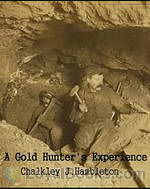 A Gold Hunter's Experience
A Gold Hunter's Experience
“Early in the summer of 1860, I had an attack of gold fever. In Chicago, the conditions for such a malady were all favorable. Since the panic of 1857 there had been three years of general depression, money was scarce, there was little activity in business, the outlook was discouraging, and I, like hundreds of others, felt blue.” Thus Chalkley J. Hambleton begins his pithy and engrossing tale of participation in the Pike’s Peak gold rush. Four men in partnership hauled 24 tons of mining equipment by ox cart across the Great Plains from St... | |
By: Chan Gardiner | |
|---|---|
 Lineman
Lineman
This poem by Chan Gardiner pays tribute to the Linemen working on America's high voltage lines, working in dangerous conditions so that the average citizen can enjoy his time at home. (Summary by David Lawrence | |
By: Charles A. Conant (1861-1915) | |
|---|---|
 Alexander Hamilton
Alexander Hamilton
Alexander Hamilton was a significant figure in the political and economic development of the early United States. He served in the American Revolutionary War and became an aide to General George Washington. He was one of the authors (along with John Jay and James Madison) of a series of essays know as The Federalist Papers, which were written in support of the ratification of the proposed Constitution. Scholars and others still refer to these essays to this day for interpretation of the Constitution... | |
By: Charles A. Higgins | |
|---|---|
 Titan Of Chasms: The Grand Canyon Of Arizona
Titan Of Chasms: The Grand Canyon Of Arizona
This is a 1906 collection of three essays by men famously associated with The Grand Canyon: Charles A. Higgins, John Wesley Powell, and Charles F. Lummis. - Summary by david wales | |
By: Charles A. Siringo (1855-1928) | |
|---|---|
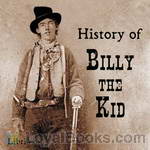 History of Billy the Kid
History of Billy the Kid
A cowboy outlaw whose youthful daring has never been equalled in the annals of criminal history.When a bullet pierced his heart he was less than twenty-two years of age, and had killed twenty-one men, Indians not included.The author feels that he is capable of writing a true and unvarnished history of "Billy the Kid," as he was personally acquainted with him, and assisted in his capture, by furnishing Sheriff Pat Garrett with three of his fighting cowboys--Jas. H. East, Lee Hall and Lon Chambers... | |
 Texas Cowboy; Or Fifteen Years on the Hurricane Deck of a Spanish Pony
Texas Cowboy; Or Fifteen Years on the Hurricane Deck of a Spanish Pony
Charles A. Siringo was an American lawman, detective, and agent for the Pinkerton National Detective Agency during the late 19th century and early 20th century…. After taking part in several cattle drives, Siringo stopped herding to settle down, get married (1884), and open a merchant business in Caldwell, Kansas. He began writing a book, entitled A Texas Cowboy; Or Fifteen Years on the Hurricane Deck of a Spanish Pony. A year later, it was published, to wide acclaim, and became one of the first true looks into life as a cowboy written by someone who had actually lived the life. | |
By: Charles A. Ward (1846-1908) | |
|---|---|
 Oracles of Nostradamus
Oracles of Nostradamus
Charles A. Ward was considered one of the most knowledgeable in his studies of the prophecies of Nostradamus. Ward viewed the prophecies of Nostradamus as predictions that only make sense in hindsight, rather than a tool for predicting future events. This work includes Ward's theories regarding the methods of prediction and his theoretical belief that the predictions were sequential. Ward details only a few of the actual predictions of Nostradamus in his interpretations but attempts to shed light on his theoretical orientation in hopes of making them easier to understand for the reader. - Summary by CJ Plogue | |
By: Charles Adams (1808-1890) | |
|---|---|
 Memoir of Washington Irving
Memoir of Washington Irving
Arguably one of America's greatest writers, Washington Irving is the author of such classics as "Legend of Sleepy Hollow," "Bracebridge Hall," and "Knickerbocker's History of New York." This book is a concise and extremely entertaining biography of this unique author. Note to the listener: There are a couple of typos in this text. Chapter 33 should have been numbered as chapter 32, and there are two chapter 35's. The readers have keep the typos in the reading, therefore, there is no chapter 32, and the two chapter 35's are designated at "the first" and "the second." - Summary by Greg Giordano | |
By: Charles Alexander Eastman (1858-1939) | |
|---|---|
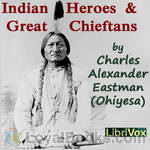 Indian Heroes and Great Chieftans
Indian Heroes and Great Chieftans
EVERY age, every race, has its leaders and heroes. There were over sixty distinct tribes of Indians on this continent, each of which boasted its notable men. The names and deeds of some of these men will live in American history, yet in the true sense they are unknown, because misunderstood. I should like to present some of the greatest chiefs of modern times in the light of the native character and ideals, believing that the American people will gladly do them tardy justice. | |
 The Soul of the Indian
The Soul of the Indian
"We also have a religion which was given to our forefathers, and has been handed down to us their children. It teaches us to be thankful, to be united, and to love one another! We never quarrel about religion." | |
 Indian Child Life
Indian Child Life
The author was raised as an American Indian and describes what it was like to be an Indian boy (the first 7 chapters) and an Indian Girl (the last 7 chapters). This is very different from the slanted way the white man tried to picture them as 'savages' and 'brutes.'Quote: Dear Children:—You will like to know that the man who wrote these true stories is himself one of the people he describes so pleasantly and so lovingly for you. He hopes that when you have finished this book, the Indians will seem to you very real and very friendly... | |
By: Charles Alexander Eastman (1858-1939) | |
|---|---|
 Indian To-day
Indian To-day
Based in part upon the author's own observations and personal knowledge, it was the aim of the book to set forth the status and outlook of the North American Indian. He addressed issues such as Indian schools, health, government policy and agencies, and citizenship in this book. In connection with his writings, Eastman was in steady demand as a lecturer and public speaker with the purpose of interpreting his race to the present age. | |
 From the Deep Woods to Civilization: Chapters in the Autobiography of an Indian
From the Deep Woods to Civilization: Chapters in the Autobiography of an Indian
From the Deep Woods to Civilization is the sequel to Indian Boyhood. Charles Eastman (Ohiyesa) gives his account of what it was like to transition from the ways of his Inidan life to that of the white man. His father, long thought dead, had converted to Christianity and wished the same for his son as well as receiving education in the white man's school. At the age of 15, Ohiyesa must learn to balance the old familiar life of the American Indian with that of the new in the world of the white man, one of his first acts being the cutting of his long hair and attending school... | |
By: Charles Anderson Dana (1819-1897) | |
|---|---|
 Recollections of the Civil War
Recollections of the Civil War
Recollections of the Civil War records the events that took place during the American Civil war. It forms one of the most remarkable volumes of historical, political, and personal reminiscences which have been given to the public. Mr. Dana wrote these Recollections of the civil war according to a purpose which he had entertained for several years. They were completed only a few months before his death on October 17, 1897. Go to the e-book on this book's catalog page for some great illustrations and an index. | |
By: Charles Austin Beard (1874-1948) | |
|---|---|
 History of the United States: The Colonial Period Onwards
History of the United States: The Colonial Period Onwards
Vol. I: The Colonial Period. Charles Austin Beard was the most influential American historian of the early 20th century. He published hundreds of monographs, textbooks and interpretive studies in both history and political science. He graduated from DePauw University in 1898, where he met and eventually married Mary Ritter Beard, one of the founders of the first Greek-letter society for women, Kappa Alpha Theta. Many of his books were written in collaboration with his wife, whose own interests lay in feminism and the labor union movement (Woman as a Force in History, 1946)... | |
By: Charles B. Cory (1857-1921) | |
|---|---|
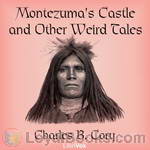 Montezuma's Castle and Other Weird Tales
Montezuma's Castle and Other Weird Tales
This is a collection of weird tales inspired from the natural history expeditions of the author, an independently wealthy bird collector, Olympic golfer, writer of many books on birds of the world, and, as evidenced in these pages, a fine storyteller to boot. | |
By: Charles B. Towns (1862-1947) | |
|---|---|
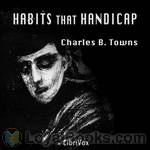 Habits that Handicap
Habits that Handicap
Habits that Handicap is one of three novels about alcholoism and drug addiction written by Charles B. Towns. Towns was an expert on alcoholism and drug addiction who helped draft drug control legislation in the United States during the early 20th century. He also founded the Towns Hospital in New York City, which aimed at drying out the well-to-do patient. | |
By: Charles Babbage (1791-1871) | |
|---|---|
 Passages from the Life of a Philosopher
Passages from the Life of a Philosopher
Some men write their lives to save themselves from ennui, careless of the amount they inflict on their readers. Others write their personal history, lest some kind friend should survive them, and, in showing off his own talent, unwittingly show them up. Others, again, write their own life from a different motive—from fear that the vampires of literature might make it their prey. I have frequently had applications to write my life, both from my countrymen and from foreigners. Some caterers for the public offered to pay me for it... | |
By: Charles Badger Clark (1883-1957) | |
|---|---|
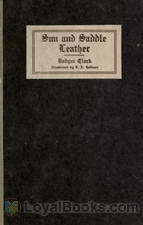 Sun and Saddle Leather
Sun and Saddle Leather
Cowboy Poetry began as a 19th Century Performance Art staged around a crackling campfire, referencing tall tales and personal stories, lost girlfriends, and love of the vast unboundaried West. It was best accompanied by a hot tin cup of boiled coffee, dunked biscuits, and beef jerky. The rhymed couplets were easy to remember, and once the day's drive was done, everybody had a few hours to listen to friends and wonder at the stars. Badger Clark gave voice and record to this unique American folk art, and built on it to express his own creative genius. He was declared the first Poet Laureate of South Dakota, or as he liked to say, “Poet Lariat.” | |